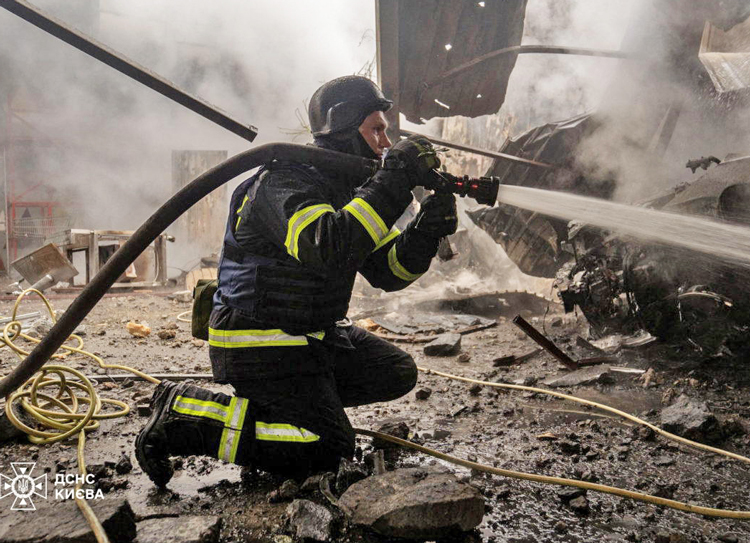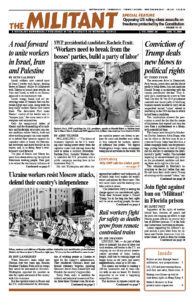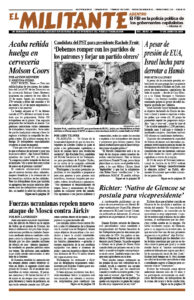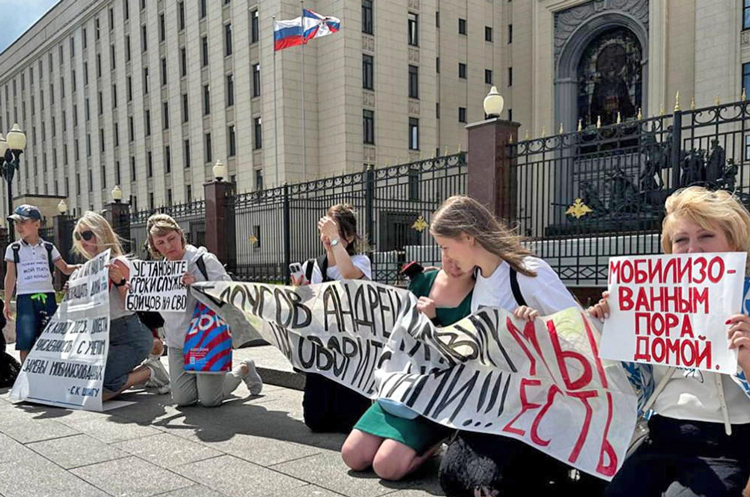When Moscow’s tanks rolled into Ukraine over two years ago, Russian President Vladimir Putin told his troops they would be welcomed as liberators. Washington expected the invaders to take the capital and much of the country with little resistance.
But the capitalist rulers in Russia and the U.S. underestimated the determination of working people in Ukraine to fight for the country’s independence. They reinforced Ukraine’s army and formed voluntary brigades, repelling Moscow’s forces from around Kyiv and Kharkiv, the country’s biggest cities.
Today Putin seeks to mobilize the military and industrial resources of Russia, three times Ukraine’s size, for an extended war. Moscow has hiked income taxes, especially on working people, to finance military spending, which has doubled from 14% of the budget in 2021 to 29% this year.
In the past few months, Moscow’s forces have stepped up attacks all along the over 600-mile front line with Ukraine’s defenses to try to take advantage of the Ukrainian army’s shortages of ammunition and troop reserves. Since early May, the Putin regime has escalated bombardment of civilian targets in Kharkiv and taken out over half the power grid across the country. Its forces invaded Ukraine’s northeastern border, directly threatening the city.
But the incursion toward Kharkiv was stalled by Ukrainian counterattacks, with Russian losses the highest of the war so far. In the 24 hours between June 2-3, Russia lost 1,270 troops, the New York Post reported, the deadliest day of the war. They also lost 14 tanks, 22 armed personnel carriers and 47 pieces of artillery. Kharkiv officials announced May 24 plans for the construction of an underground town, with a school, medical facilities, shopping areas and other amenities that can withstand heavier bombardments.
The U.S. rulers’ overriding goal is to try to stabilize the region for their own predatory interests against both rivals and allies alike. Their concern with Ukrainian sovereignty extends only so far as it aids that goal.
Washington has sought to avoid a direct confrontation with Moscow by imposing constraints on how the weapons it supplies Ukrainian forces can be used. Longer-range rockets were only to be used to strike military targets in Russian-occupied Ukrainian territory, not inside Russia itself.
At the end of May, President Joseph Biden’s administration eased some of these restrictions, but only for the Kharkiv region. Ukrainian forces can now target Moscow’s forces amassing near the border there or warplanes in Russian airspace that are launching missiles or glide bombs.
The Kremlin uses U.S. arms shipments to Ukraine to claim that Washington is “provoking Ukraine to continue this senseless war.” But it’s Putin’s attempt to seize Ukraine and incorporate it into Russia that is the root cause of the war.
Worker volunteers defend Ukraine
Roman, a 38-year-old platoon commander, was one of the thousands of Ukrainian workers who volunteered to fight Putin’s invasion. “For Europe and the whole world, we’re on the front lines,” he told Reuters. “If you let him get away with it,” Putin “is not going to stop” just in Ukraine.

Viktor, an infantryman in the Ukrainian army, said that in February his exhaustion from constant shelling and lack of sleep got to him. Despite a shortage of soldiers, his commander gave him a few days off to rest. Then he returned, even though conditions are “worse than hell.” Such brief respites are not uncommon in the Ukrainian army.
By contrast, most Russian mobilized soldiers, if allowed a home rest, would never return to the carnage at the front.
Increasingly faced with troop shortages, including on the Kharkiv front, the Kremlin is pressing prison inmates and young men arrested for debt arrears, like alimony payments, into the army.
Pro-war Project Arkhangel in Russia said June 1, “How is the situation now? It sucks.” They reported special Ukrainian drone units around Kharkiv are able to stop just about any Russian attack, no matter its size.
The Kremlin claims it will add another 300,000 troops to boost the half a million now occupying parts of Ukraine. But no mass call-up is planned since Putin fears this would trigger a fresh wave of protests like those after the Sept. 21, 2022, mobilization.
A group of wives, sisters and mothers of Russian soldiers, The Way Home, has been protesting, demanding their relatives’ rotation out of the carnage. Although the Putin regime has been careful not to openly suppress its vigils, the government ruled May 31 that the group and one of its spokespeople, Maria Andreeva, are “foreign agents,” a smear it uses to target a range of political opponents.
But the women weren’t intimidated. About a dozen wives and children picketed the Russian Ministry of Defense in Moscow June 3 with placards and a banner saying, “It’s time for the mobilized to come home.” When the police arrived, the women said they were from different organizations and continued the protest.


